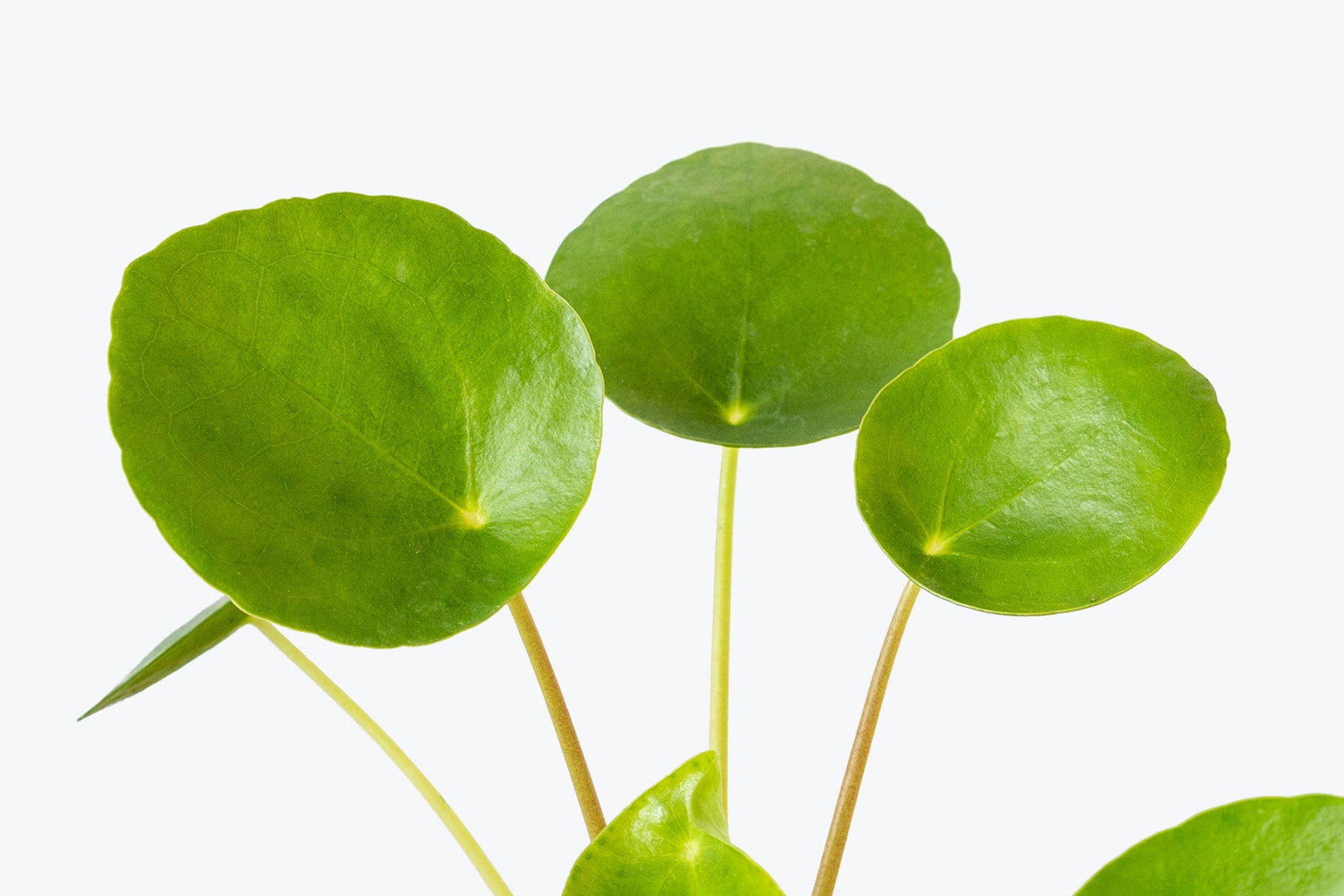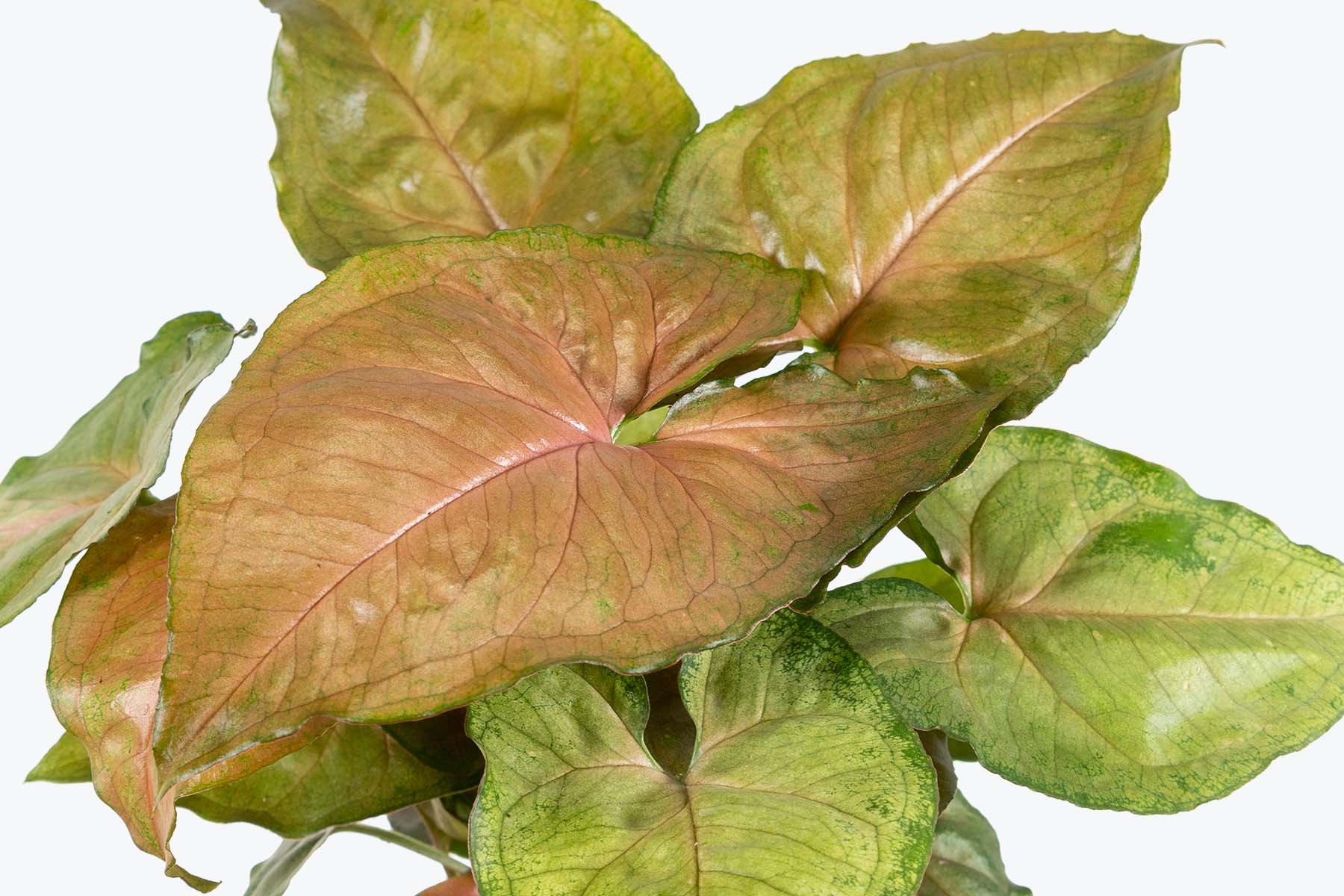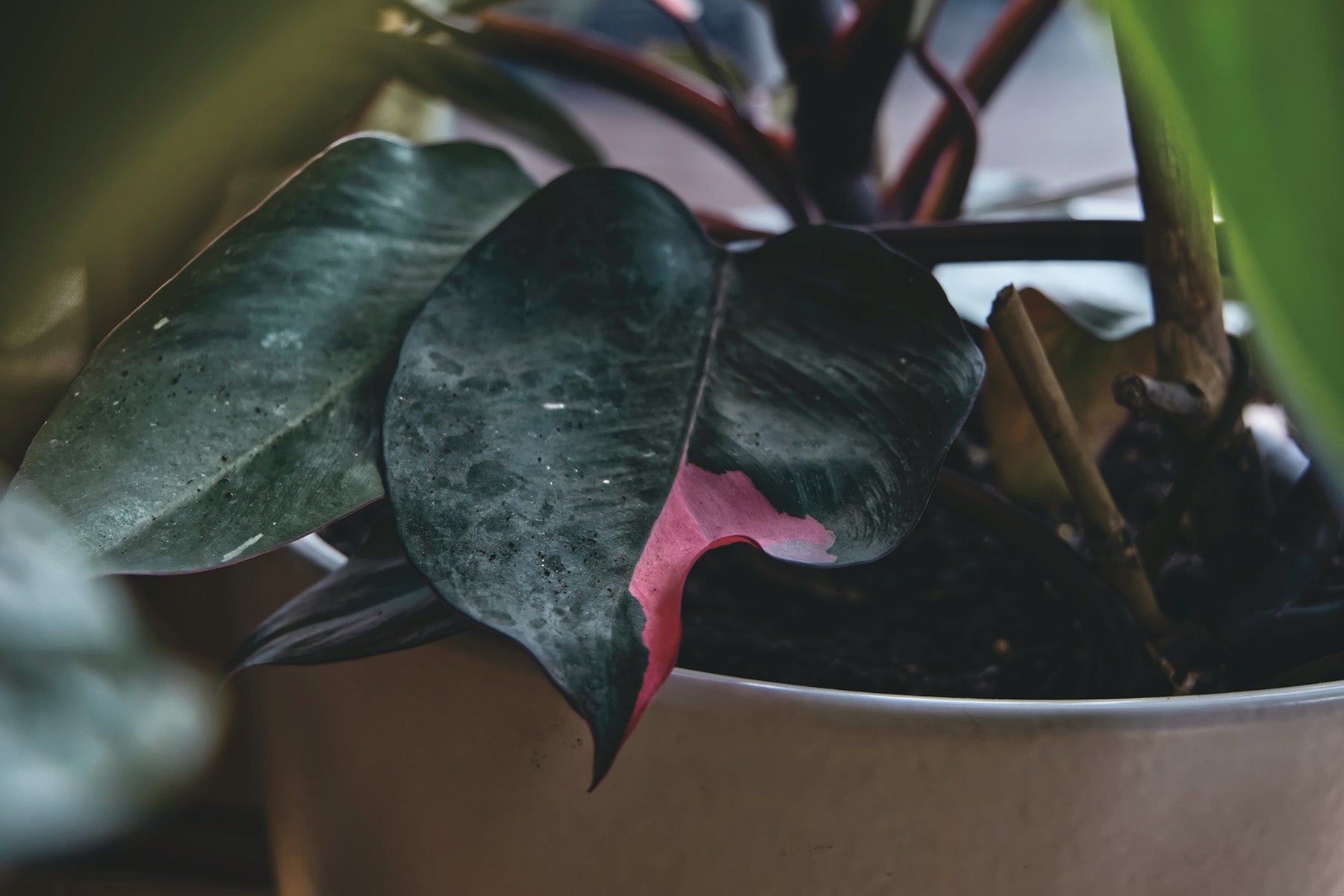
How to Take Care of Your Pilea
Once a very difficult plant to get your hands on, the Pilea Peperomioides can now be seen in almost every household, whether you are a collector of houseplants or not. Their unique, vibrant green, lily pad-like foliage makes it obvious why they were so sought-after as there aren't very many plants out there that have a similar look. Not only are they an absolutely stunning plant, but they are also relatively low maintenance and can be easily shared between friends and family, hence their common name of the Friendship Plant - they are truly a gift that keeps on giving.
△ 4" Pilea Peperomioides
Also known as the Chinese Money Plant, UFO Plant, and Pancake Plant, the Pilea is an Asiatic perennial herb, belonging to the stinging nettle family of Urticaceae, and is native to southern China, growing along the base of the Himalayan mountains. With leaves slightly similar to some Peperomia varieties, but with flowers, or inflorescences, that are unique to the Pilea species, so their name of Pilea Peperomioides, Latin for "Peperomia-like", came to be. The circular leaves are connected to the stem via long petioles (the stalk that attaches the leaves to the stems) and the mother stem will grow tall and woody over time, producing plenty of bright green leaves as it does so.
🪙
The Pilea's coin-shaped foliage is thought to bring good fortune, money, and abundance to its owner, which contributes to its popularity as a housewarming gift!
The offsets, or pups, that Pilea's produce are what gave them their name of the Friendship Plant because they can either be left to fill up the pot or removed to start their own plant. Once you have one plant, you will never need to buy another! That's how easy they are to propagate, and why they became so attainable after being rare for quite some time. Since they can be shared and grown with little effort, producing relatively quick growth and a unique appearance, this makes them loved and adored by both beginner plant parents and experienced plant parents alike.
Despite being known as the most popular variety, the Pilea Peperomioides is not the only Pilea out there, the following species are also available as houseplants:

Pilea Aquamarine:
Pilea Glauca, Silver Sprinkles Plant, or Grey Artillery Plant, is a trailing, dainty tropical with delicate, tiny, silvery-green foliage and contrasting red stems. Native to the rainforests of Central and South America, it is an ideal plant for both terrariums and hanging baskets.

Pilea Cadierei:
Aluminum Plant, or Aluminum Pilea, is predominantly found in Southeast Asia. Its name is inspired by its unique mounds of quilted leaves, covered in sharp silver markings. They grow much fuller when their leggy growth is pruned (annual pruning to half of the stem's normal length).

Pilea Depressa:
Baby Tears, or Depressed Clearweed, is a trailing plant native to Mexico. With a low-growing, spreading habit and scalloped, thick green leaves and pinkish stems, it does remarkably well in a terrarium. Its tiny, intricate leaves reach about 1/4" wide and grow tight against the stem.

Pilea Moon Valley:
Pilea Mollis, aka Moon Valley Pilea, is native to Central & South America. Its common name is inspired by its deeply dimpled leaves - thought to look like the craters and valleys on the moon. Growing best when it is pruned, it produces leaves that are bright green with copper veins.
✂️
The great thing about Pilea is that they are very easy to propagate! Remove a healthy pup that has about 4-5 leaves the size of your thumbnail or larger, taking 2 inches of stem with it and including as many roots attached as possible. Place it in water and allow more roots to develop or plant it directly in some soil, making sure to keep the soil evenly moist. Removing a healthy leaf with no more than 2 inches of stem and placing that in water is another way of encouraging pups to form.
Keep on reading to find out what your Pilea Peperomioides requires to live a long, healthy, happy life!
Light Requirements
Just like most other indoor plants, Pileas prefer medium to bright, indirect light for optimal growth and colouring, as well as offset production. The main thing that they cannot handle is prolonged, direct sunlight, as this could burn their leaves or cause pale growth. On the flip side, they will not have as robust growth if kept in very low light - even though they are often said to be able to live in it, they will only tolerate it and get weaker and weaker over time. Lower light will also cause leggy, stretched-out growth, developing very slowly.
The lowest light conditions that the Pilea Peperomioides can handle include the following:
- A few meters back from a large South, West, or East facing window
- A few feet away from a North-facing window
- Next to a South, West, or East facing window that is facing a courtyard or is blocked by a nearby building
🔄
Pilea's are especially susceptible to growing towards their light source in an obvious manner, so if your plant is mainly receiving light from one direction, rotate it every week to encourage even growth on all sides. If this is not something you care about, leave your plant as it is and enjoy the shape it chooses to grow in.
Although they can handle medium light, keep in mind that their growth habits will change depending on the light they are receiving. Check out our Ultimate Lighting Guide to learn all about the light levels in the home and how plants adapt to them. The ideal location for your plant is somewhere that mimics its natural conditions, where it receives bright, indirect light, including a great view of the sky, even some morning or late afternoon sun would be fine. When they receive the prime amount of light, their growth will be full and lush, producing plenty of foliage in an even manner.
🌸
If you are lucky, you may even see your Pilea bloom! They are known to produce bunches of teeny, tiny white blooms on pink-tinged stems.
Some ideal light examples include the following:
- Next to, or very close by, a South, Southwest, or West-facing window that has sheer curtains for some bright, indirect light (they cannot handle prolonged, direct sunlight so the curtains keep the leaves from getting burned)
- About 5 ft away from a West, South or Southwest-facing window without curtains
- Directly next to a North or East-facing window
Plant Tip: Shower your plant off every couple of weeks, or when it is time to water the plant, as this will wash off any dust that has accumulated on the leaves, which need to be clear in order for the plant to perform effective photosynthesis.
One thing to note as your plant develops and matures is that it is normal for the stem of your Pilea to change colour, turning a reddish-brown shade, and become fibrous, or woody. It is completely natural for the plant to add more cells to its stem to sustain an increase in height and weight, especially since they tend to grow in some interesting shapes.
🍃
Try not to be concerned about every yellowing leaf on your plant, they are all a part of the natural process. If there are no pests on your plant and it is pushing out healthy growth, your plant will gradually shed its older leaves over time.
Watering Requirements
Watering is one of the more important aspects of a Pilea's care to get right, as they won't tolerate too much water. During the growing season, in the spring and summer months, water your plant when the soil is about half dry. During the dormant season, in the fall and winter months, it is best to let the soil go a little drier in between waterings due to the fact that the days are much shorter, cooler, and darker. Remember that each home is different so the needs of every plant will vary from home to home, as well as season to season.
🚰
When in doubt, let the soil dry out a little longer and wait until the leaves begin to droop slightly, which can be an indication that your plant is thirsty (feel the soil to confirm this).
As for the frequency of watering, or how often to water, that will all depend on the light your plant is receiving, the warmth and humidity of your home, the size of the pot, as well as the pot that the plant is planted in. You should expect to water your plant more often in the spring/summer months though, when the days are longer, warmer, and brighter, and less often in the winter months when the days are shorter, cooler, and darker. You should also expect to water a plant that is receiving higher light more often than the plant that is receiving lower light.
Watering Tip: Feel the leaves of your plant when it has been watered thoroughly, they should be hard and thick, and again when it is thirsty, when they will feel soft and thin, to help you determine when your plant needs to be watered in the future.
When it comes time to water, water your plant fully so that all of the soil is evenly moist, dumping any excess water that drains out after doing so. This is why it is important to keep your plant in a porous potting mix. If the soil is not absorbing the water, try bottom-watering your plant instead, where you let it sit in a bowl of 2-3 inches of water for roughly 30-45 minutes, until the soil has absorbed some water. Then, in either case, let any extra water drain out and dump this excess. Try to be patient and take the time to get to know your home and plant, implementing different measures as needed to keep your plant healthy and happy!
📋
Pilea should be repotted roughly every 12-18 months, especially for smaller plants, but only repot when it is indeed the right time to repot as it can add unnecessary stress if it is not. Feel free to check out our Repotting Guide for more information on when and how to repot.
Have you ever noticed white spots on the undersides of your plant's leaves? If so, this is generally nothing to worry about as it is most likely mineral residue from water vapour being released through the plant's pores, or stomata. As long as they are not some other pest, such as mealybug or whitefly, they are not an issue and a completely normal occurrence. If there is an excess of mineral build-up, try using rainwater or distilled water to water your plant, which will have fewer chemicals for the plant to filter.
Humidity
In general, Pilea can live and be happy in the average home humidity and temperature, so if you're comfortable, your plant is most likely comfortable. What you want to do is you want to avoid extreme temperature fluctuations and it is advised not to keep your plant near a heating vent, radiator, air conditioner, and cold windows/window panes in the winter months. With that being said, your plant will love and appreciate some added humidity, so, if you want to make the effort, you can:
- Place the nursery pot on top of a bed of rocks that are covered in water, which increases the humidity in the air around the plant
- Mist your plant daily with room-temperature water to increase the ambient humidity around it
- Purchase a humidifier and keep it in the same area as your plant when turned on
Fertilizing
Even though it is of course optimal to fertilize your plants, Pilea Peperomioides are not very heavy feeders. Over-fertilizing your plant can actually cause issues such as salt build-up and it can burn the roots of an otherwise healthy plant. That being said, they do appreciate some nutrients, so it is best to fertilize on a monthly basis, throughout the spring and summer, with either a gentle, organic fertilizer or a balanced synthetic fertilizer diluted by half, always making sure to read the instructions on the label. Feeding your plants will promote strong colouring and healthy root development. Then, during the fall and winter months, hold off on fertilizing to give them their time of rest.
Toxicity
Generally non-toxic to ingest, by both pets and people, some ingestion could result in a mild digestive reaction. Despite certain plants being pet-friendly, we generally advise keeping your beautiful houseplants out of reach of exploratory small children and pets, in the potential case of someone feeling like having a snack.
Common Pests & Problems
Keeping in line with their great reputation as houseplants, Pilea's don't have too many problems when it comes to pests and other issues. That being said, even though most of these problems don't occur all the time, we still want to outline any possible issues you could experience while having them in your care:
Pests:
If you notice a sticky, honeydew sap, webs, or lumps and bumps on the leaves or branches, there is a chance pests have set up shop. These can include scale, mealybugs, and spider mites - they usually cause yellow leaves and an overall weakened plant. Plants are especially susceptible to pests if they are already weak due to nutrient deficiencies, watering issues, poor lighting, and more. To remove them, check out our pest removal guides in the Plant Care portion of our website.
Yellowing leaves:
If this is not due to the natural shedding of older leaves, it might be due to a watering issue. If it is overwatering, the plant will have soggy stems and yellow, soft leaves with potential brown spots, if it is under-watering, the plant may have droopy, crispy leaves with compacted soil.
Drooping or curling leaves:
This could be because of watering issues, the plant not receiving enough light, nutrient deficiencies, an unhealthy root system, or adapting to a new home. Make small adjustments, ensuring all of the above measures are put in place so that your plant can remain healthy!
Sunburn:
When a Pilea is kept in too much direct sunlight, sunburn can occur, where the plant has bleached leaves with bright red rims, if the plant's roots are not able to deliver enough water to the leaves to keep them cool. Plants that are grown indoors often have thinner cuticles - the waxy layer whose role is to keep the moisture in and the pests out - so the plant hasn't acclimated to bright light and wasn't given time to harden off.
Top-heavy plant:
The taller your plant grows, the more external support it needs, especially as the stem becomes woody to support all of the growth. Place a bamboo stake on the opposite side of the direction the plant is leaning, gently pulling on the stem to tie it up straight. Some people like to leave the plant as it is, allowing it to grow into its unique shape and shed any older leaves, but you could also do one of the following:
- If the stem has become etiolated due to not receiving enough light, growing stretched out with thin, spindly, pale growth, move the plant to a location that receives brighter light.
- If you wish to behead the plant and start afresh, you can regrow both sections - chop off the stem close to where it comes out of the soil and, keeping about 2 inches of the stem, place the cut section in water until a new root structure forms, then potting it into soil. The original stump will form new growth over time but ease back on the watering since there is no foliage that requires additional moisture. New plantlets will emerge near the stump!
Although there are a few issues that could interfere with your Pilea, they are generally quite simple to deal with, and they grow so easily. Enjoy your plant and the shapes it grows in, there is no other plant that will look exactly the same as yours!







